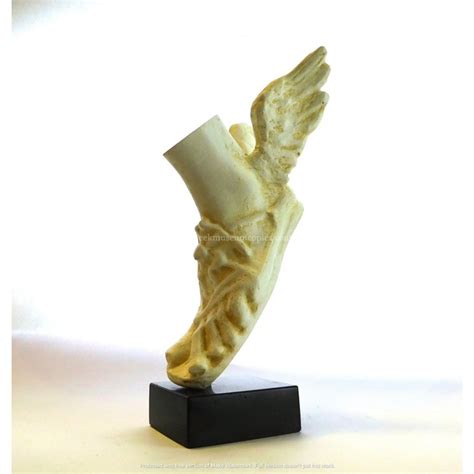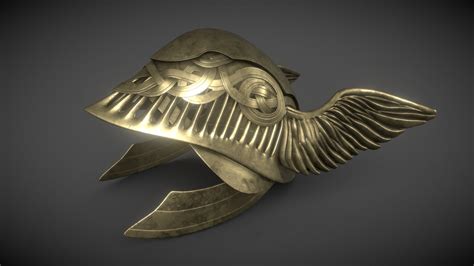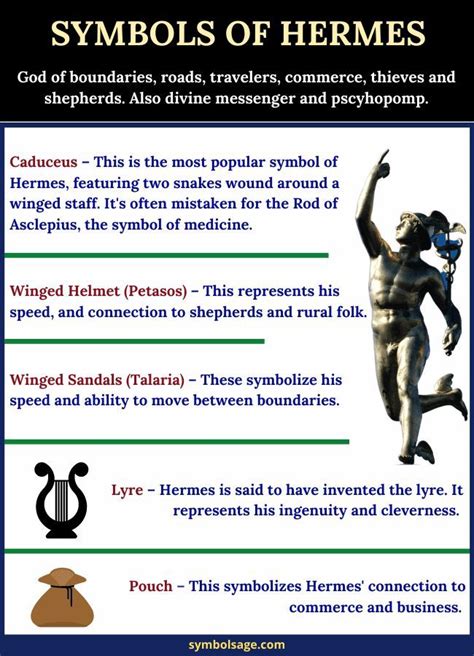hermes winged hat | god of speed mythology hermes winged hat A petasos (Greek: πέτασος) or petasus (Latin) is a broad brimmed hat of Thessalian origin worn by ancient Greeks, Thracians and Etruscans, often in combination with the chlamys cape. It was made of wool felt, leather, straw or animal skin. Women's versions had a high crown while those for men featured a lower crown. It was worn primarily by farmers, travellers and hunters, and wa. Rolex upped the water resistance to 300 meters (from 200m) and added a sapphire crystal, making for a more modern, durable dive watch. It also makes the Submariner more luxurious. Altogether, the reference 16610 is perfect for those who want a little bit of everything: a little vintage, a little modern – but still all Submariner.
0 · winged sandals of Hermes
1 · winged helmet symbolism
2 · what animal represents Hermes
3 · shoes with wings mythology
4 · greek god with winged helmet
5 · god of speed mythology
6 · Hermes winged sandals and helmet
7 · Hermes winged helmet
• 22 mars : convention de Bâle sur le contrôle des mouvements transfrontières de déchets dangereux et de leurs éliminations . See more
A winged helmet is a helmet decorated with wings, usually one on each side. Ancient depictions of the god Hermes, Mercury and of Roma depict them wearing winged helmets, and in the 19th century the winged helmet became widely used to depict the Celts. It was also used in romantic illustrations of . See moreThere is some limited evidence of such decorative motifs being used on actual helmets in the ancient world, but these may have functioned as ceremonial rather than functional objects. See more• Horned helmet• Petasos• Golden hat• Pointed hat See more• Connolly, P. (1981) Greece and Rome at War. Macdonald Phoebus, London. ISBN 1-85367-303-X See more
A petasos (Greek: πέτασος) or petasus (Latin) is a broad brimmed hat of Thessalian origin worn by ancient Greeks, Thracians and Etruscans, often in combination with the chlamys cape. It was made of wool felt, leather, straw or animal skin. Women's versions had a high crown while those for men featured a lower crown. It was worn primarily by farmers, travellers and hunters, and wa.A winged helmet is a helmet decorated with wings, usually one on each side. Ancient depictions of the god Hermes, Mercury and of Roma depict them wearing winged helmets, and in the 19th century the winged helmet became widely used to depict the Celts.
It was worn primarily by farmers, travellers and hunters, and was considered characteristic of rural people. As a winged hat, it became the symbol of Hermes, the Greek mythological messenger god. [3] Along with the pileus, the petasos was the most common hat worn in Ancient Greece. [4] Sometimes the god’s wide-brimmed hat was also adorned with wings. The sandals and hat became instantly identifiable emblems of Hermes. Hermes also had a magical cloak that gave him the ability to become invisible.

Whether it is Hermes and the Baby Dionysus, or Hermes and Zeus meeting Baucis and Philemon, some of the greatest artists in history have had their hand at interpreting the Greek god, his winged sandals, and winged cap.Hermes's attributes and symbols include the herma, the rooster, the tortoise, satchel or pouch, talaria (winged sandals), and winged helmet or simple petasos, as well as the palm tree, goat, the number four, several kinds of fish, and incense. [9]The winged hat of the god Hermes (or Mercury) was also called a petasos. This article was most recently revised and updated by Amy Tikkanen. Petasos, wide-brimmed hat with a conical crown worn in ancient Greece. The petasos worn by men had a rather low crown, while that worn by women had a tall one.
Hermes wore winged, short leather boots called by the Greeks pteroeis pedila and by the Romans talaria. His wide-brimmed felt cap was the hat of Aidoneus (the Unseen) which rendered its wearer invisible. The wide-brimmed hat, or petasos, that Hermes often wears is distinct among the gods but would have been a common sight among the people of Greece. The petasos was the common headwear of rural peasants and shepherds, designed to keep the sun out of their eyes. Iconography played a significant role in Greek mythology, and Hermes is often depicted wearing distinct symbols. One of the most recognizable attributes of Hermes is his winged hat, known as a petasos or petasus. The wings on his hat symbolize his swiftness and ability to travel with great speed.
The petasos, a wide-brimmed hat with a conical crown, was a prominent symbol of the Greek messenger god Hermes. As a winged hat, it became the symbol of Hermes, the Greek mythological messenger god. Along with the pileus, the petasos was the most common hat worn in Ancient Greece.A winged helmet is a helmet decorated with wings, usually one on each side. Ancient depictions of the god Hermes, Mercury and of Roma depict them wearing winged helmets, and in the 19th century the winged helmet became widely used to depict the Celts.

It was worn primarily by farmers, travellers and hunters, and was considered characteristic of rural people. As a winged hat, it became the symbol of Hermes, the Greek mythological messenger god. [3] Along with the pileus, the petasos was the most common hat worn in Ancient Greece. [4]
Sometimes the god’s wide-brimmed hat was also adorned with wings. The sandals and hat became instantly identifiable emblems of Hermes. Hermes also had a magical cloak that gave him the ability to become invisible. Whether it is Hermes and the Baby Dionysus, or Hermes and Zeus meeting Baucis and Philemon, some of the greatest artists in history have had their hand at interpreting the Greek god, his winged sandals, and winged cap.Hermes's attributes and symbols include the herma, the rooster, the tortoise, satchel or pouch, talaria (winged sandals), and winged helmet or simple petasos, as well as the palm tree, goat, the number four, several kinds of fish, and incense. [9]
winged sandals of Hermes
The winged hat of the god Hermes (or Mercury) was also called a petasos. This article was most recently revised and updated by Amy Tikkanen. Petasos, wide-brimmed hat with a conical crown worn in ancient Greece. The petasos worn by men had a rather low crown, while that worn by women had a tall one.
Hermes wore winged, short leather boots called by the Greeks pteroeis pedila and by the Romans talaria. His wide-brimmed felt cap was the hat of Aidoneus (the Unseen) which rendered its wearer invisible. The wide-brimmed hat, or petasos, that Hermes often wears is distinct among the gods but would have been a common sight among the people of Greece. The petasos was the common headwear of rural peasants and shepherds, designed to keep the sun out of their eyes. Iconography played a significant role in Greek mythology, and Hermes is often depicted wearing distinct symbols. One of the most recognizable attributes of Hermes is his winged hat, known as a petasos or petasus. The wings on his hat symbolize his swiftness and ability to travel with great speed.
winged helmet symbolism

$7,812.00
hermes winged hat|god of speed mythology


























